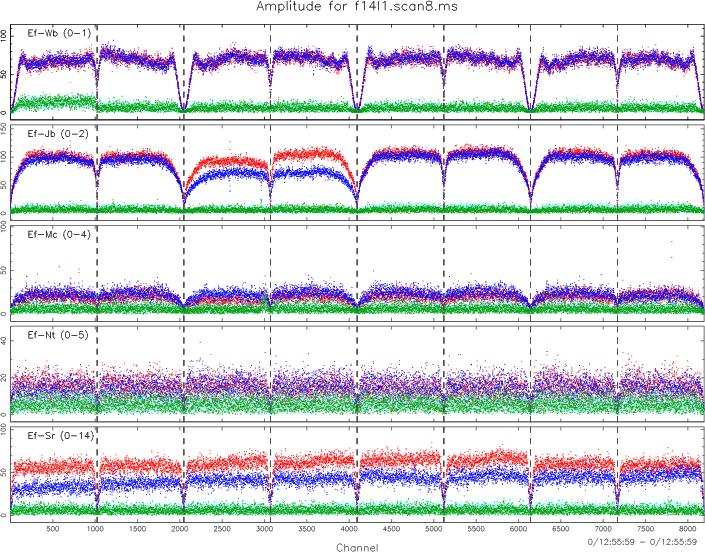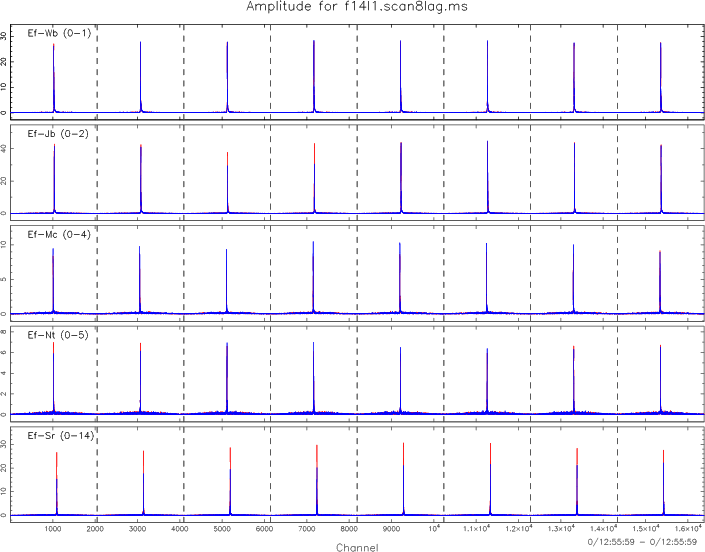New, very important test for the Sardinia Radio Telescope (SRT), the 64-meter radio telescope recently inaugurated in Sardinia and currently under scientific validation.
Just three weeks after the first successful interferometric observation test (conducted at the end of January with the Medicina radio telescope), SRT successfully passed the entry test into the European network EVN 1 (European VLBI Network).
On February 20th, SRT made its first joint observation, at a wavelength of 18 cm, with the telescopes of Effelsberg (Germany), Medicina and Noto (Italy), Jodrell Bank (UK), and Westerbork (Netherlands).


[a) Interference fringes related to the Effelsberg antenna, Germany. b) Amplitude values of the baseline related to the observation frequency. Polarizations are indicated with various colors: RR=red; LL=blue; RL=cyan; LR=green.
For a complete technical report, see the page www.evlbi.org/tog/ftp_fringes/ftp.html, by clicking on the F14L1 experiment ]
And the results, obtained from the processing center of the JIVE (Joint Institute for VLBI in Europe) in the Netherlands and shown in the figure, are truly exciting.
At the first attempt, SRT managed to produce the so-called “interference fringes,” in all recorded frequency bands and in polarization, indicating the correct functioning of the joint observation mode.
A result far from guaranteed, especially because it was achieved on the first try and with very encouraging values, a success that obviously thrilled the entire Italian VLBI team.
“It’s an excellent result, the fruit of the hard work of many people from the research facilities in Cagliari and Bologna of the National Institute of Astrophysics,” say Carlo Migoni, from INAF – Astronomical Observatory of Cagliari, and Giuseppe Maccaferri from the Institute of Radio Astronomy in Bologna of INAF.
“We really have a great team,” adds Prof. Nichi D’Amico, Director of the SRT project, “smart young people who, despite various difficulties and much job insecurity, have been working day and night for years for the success of this antenna.”
Now we just have to wait for new exciting successes. Good luck SRT!
NOTES:
1. The EVN is the organization that coordinates collaboration among the main radio astronomical instruments in Europe, Asia, and Africa to conduct simultaneous observations of celestial sources, using the so-called VLBI (Very Long Baseline Interferometry) technique.